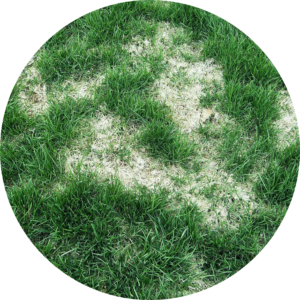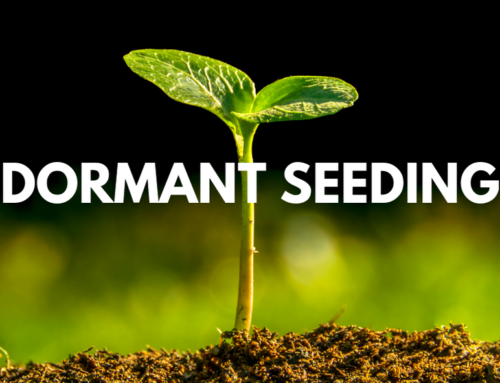
Brown Patch
This fungal disease affects cool-season grasses like Kentucky bluegrass and ryegrass.
Symptoms: Circular or irregular brown patches with a “smoke ring” at the edges. May appear slimy in the morning.
Prevention & Treatment: Avoid over-fertilizing with nitrogen, water deeply and infrequently, improve air circulation, and use fungicides if necessary.

Dollar Spot
This widespread fungal disease affects various grass species, particularly in warm, humid weather.
Symptoms: Small, silver-dollar sized patches of tan or straw-colored grass with reddish-brown borders.
Prevention & Treatment: Maintain proper nitrogen levels, mow at a higher height, water deeply and infrequently, and apply fungicides in severe cases.

Snow Mold
This fungal disease occurs during winter or early spring under prolonged snow cover.
Symptoms: Circular or irregular patches of matted, straw-colored grass, sometimes with a pink or grayish hue.
Prevention & Treatment: Clear debris before winter, avoid excessive late-season fertilization, improve drainage, and typically fungicides are not needed.

Fusarium Patch
This disease mainly affects cool-season grasses in cool, wet weather.
Symptoms: Circular or irregular patches of matted, straw-colored grass with a pinkish or reddish hue.
Prevention & Treatment: Avoid excessive fall fertilization, mow at the proper height, improve drainage, and use fungicides in severe cases.

Red Thread
This fungal disease affects cool-season grasses in humid conditions.
Symptoms: Irregular patches of tan or pinkish turf with thin red or pink thread-like strands.
Prevention & Treatment: Improve soil drainage, avoid overwatering, maintain proper nitrogen levels, and apply fungicides if needed.

Lawn Rust
This fungal disease affects various grass species in late summer and early fall.
Symptoms: Orange, yellow, or reddish-brown powdery pustules on grass blades.
Prevention & Treatment: Maintain proper nitrogen levels, improve sunlight exposure, ensure adequate drainage, and fungicides are rarely needed.
ProLawns: Your Partner in Lawn Care
Identifying and understanding these common lawn diseases is crucial for effective lawn care. By recognizing the signs and implementing proper practices, you can minimize the risk of disease and maintain a lush, healthy lawn.
Regular monitoring and early intervention are key. If you’re unsure about a diagnosis or treatment, don’t hesitate to contact ProLawns for professional advice and assistance. We’re committed to helping you achieve the beautiful lawn you deserve.





